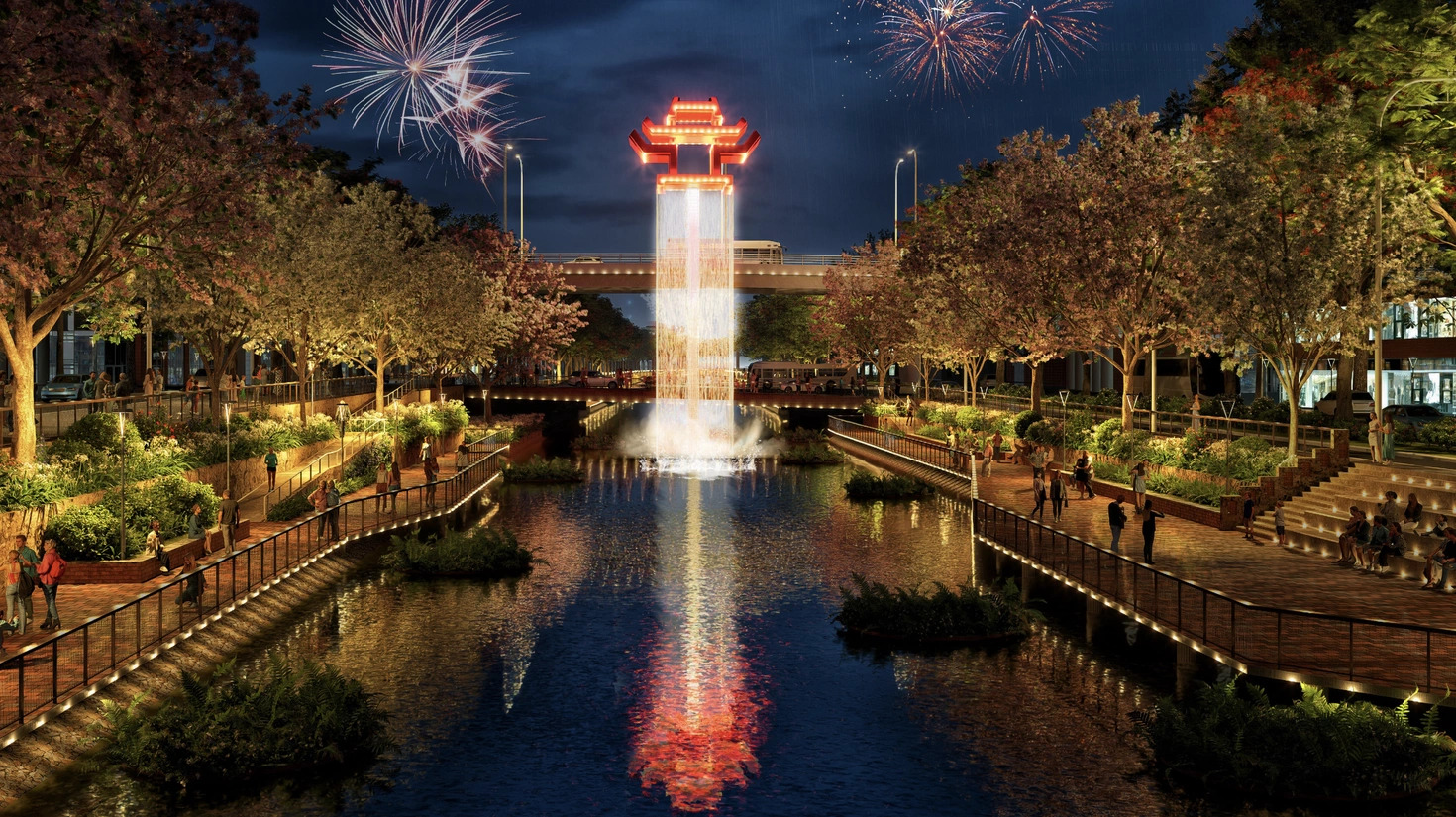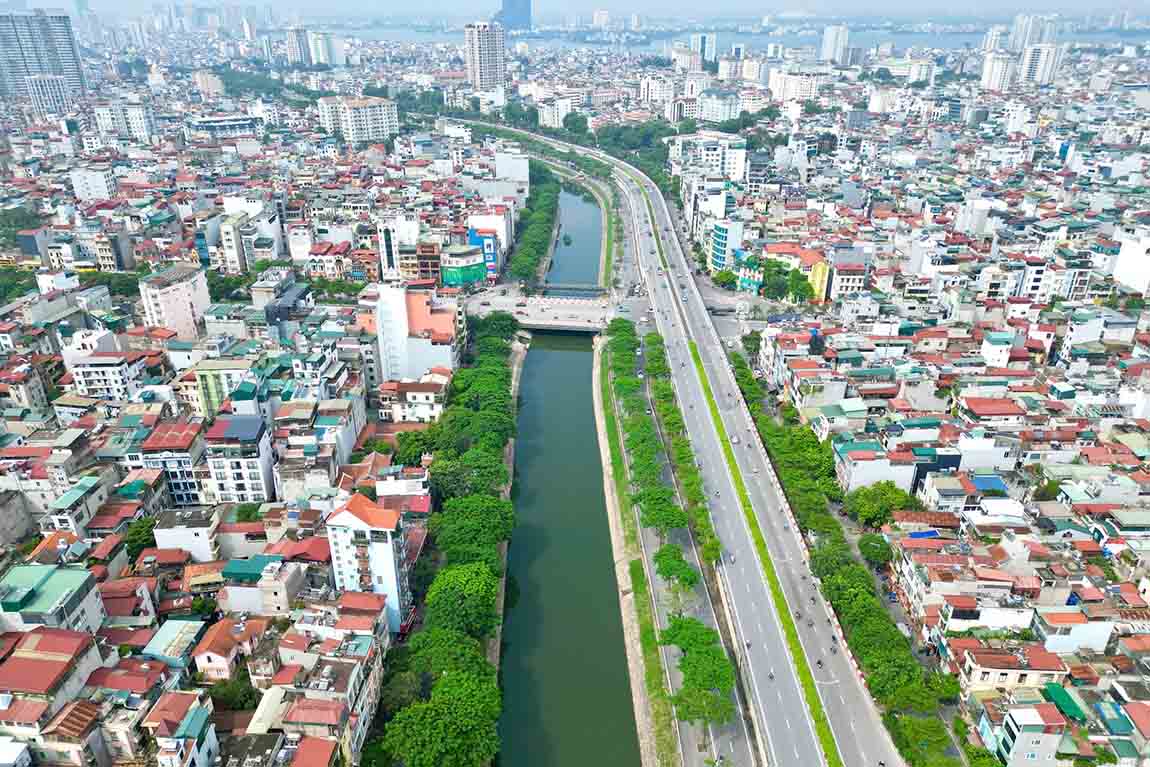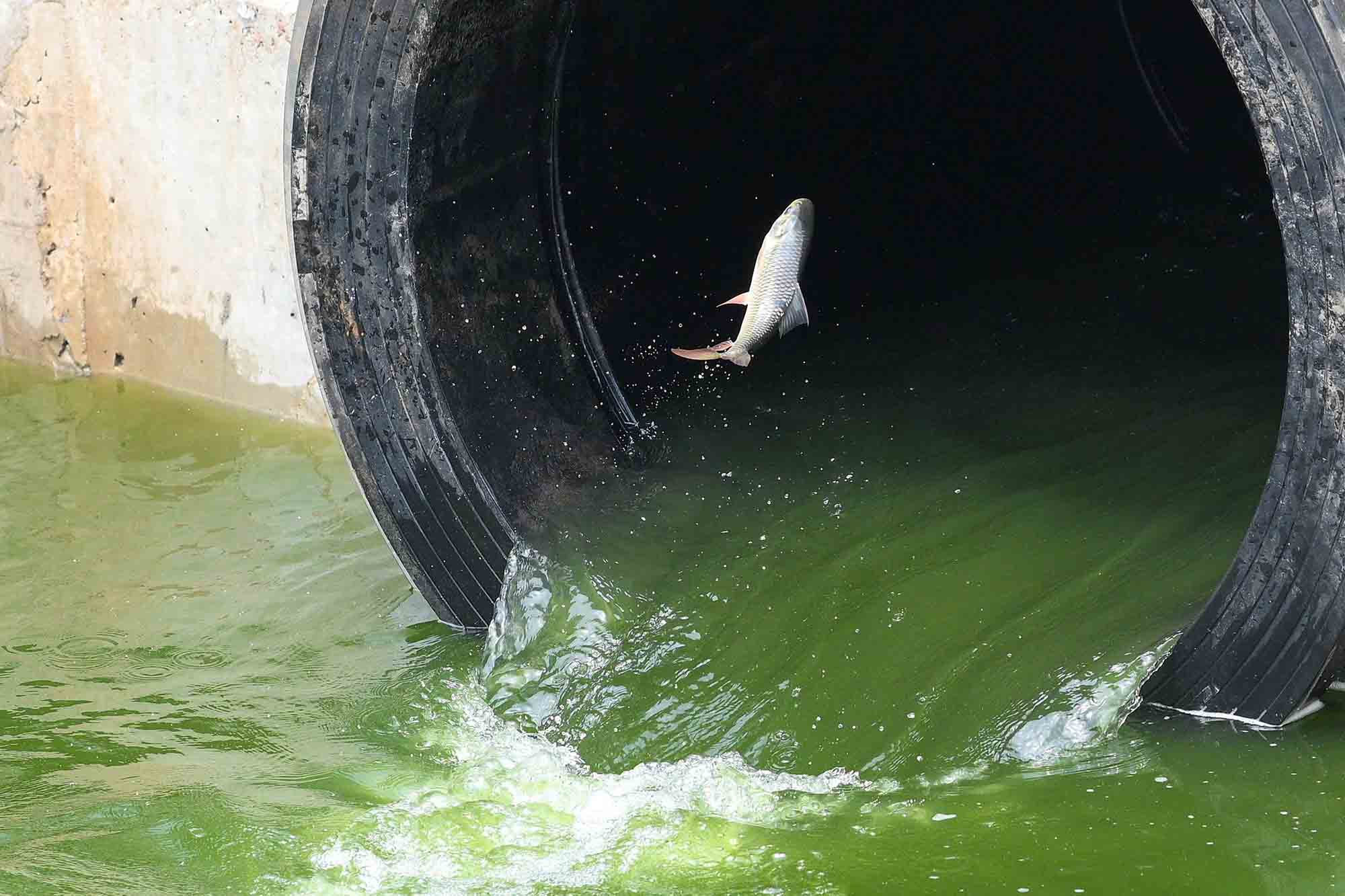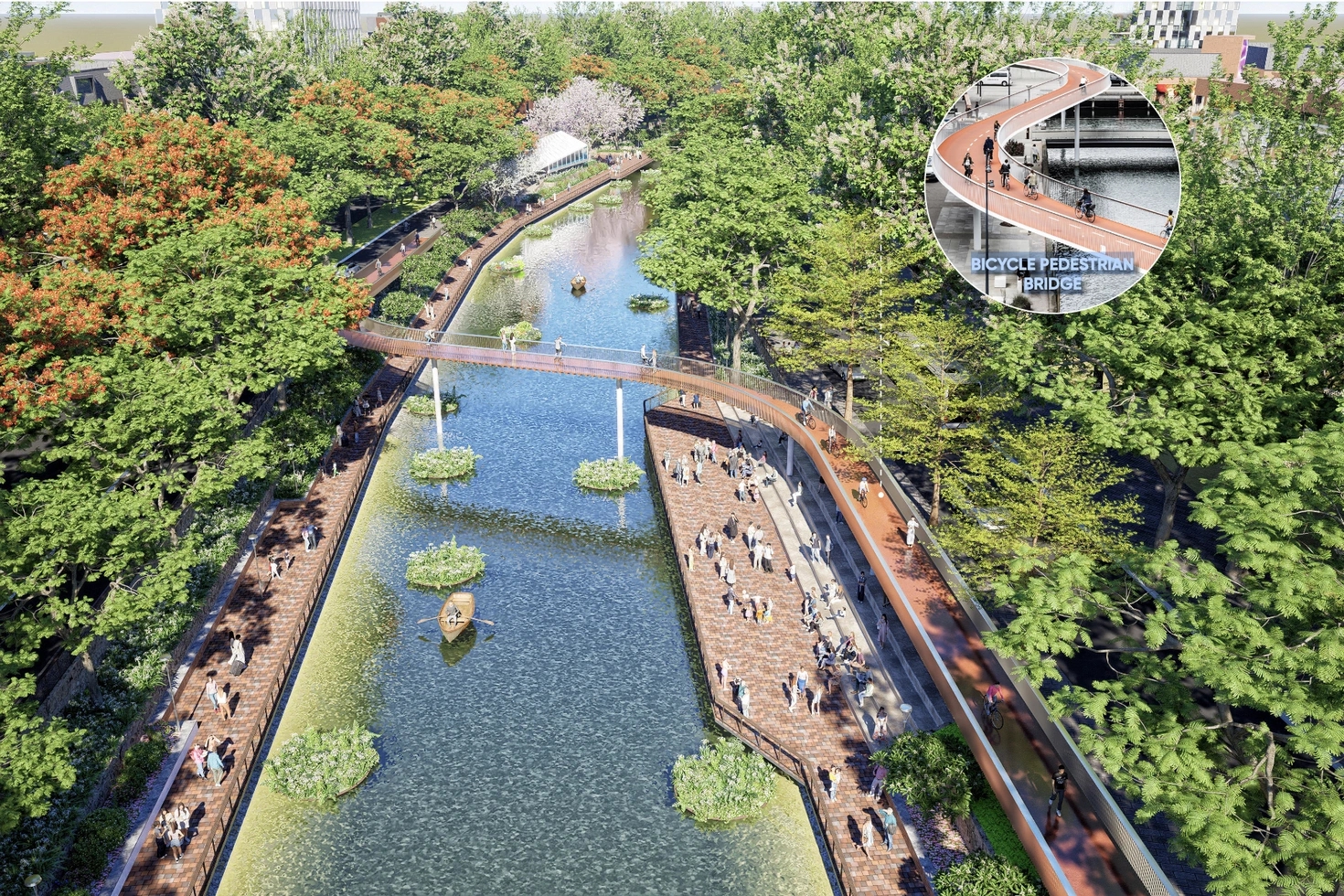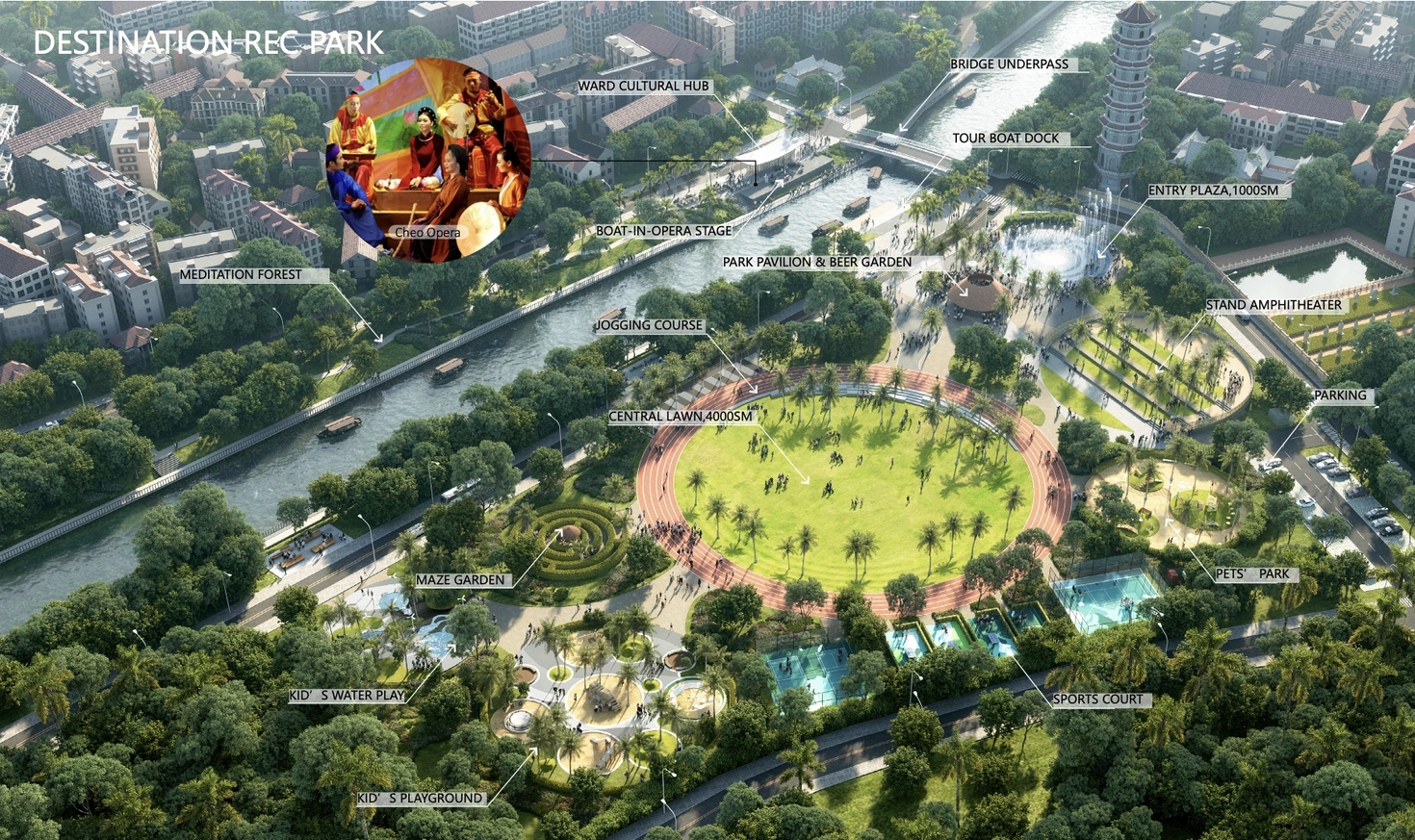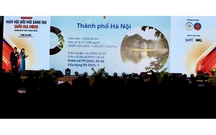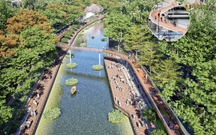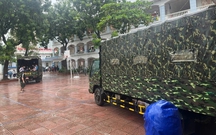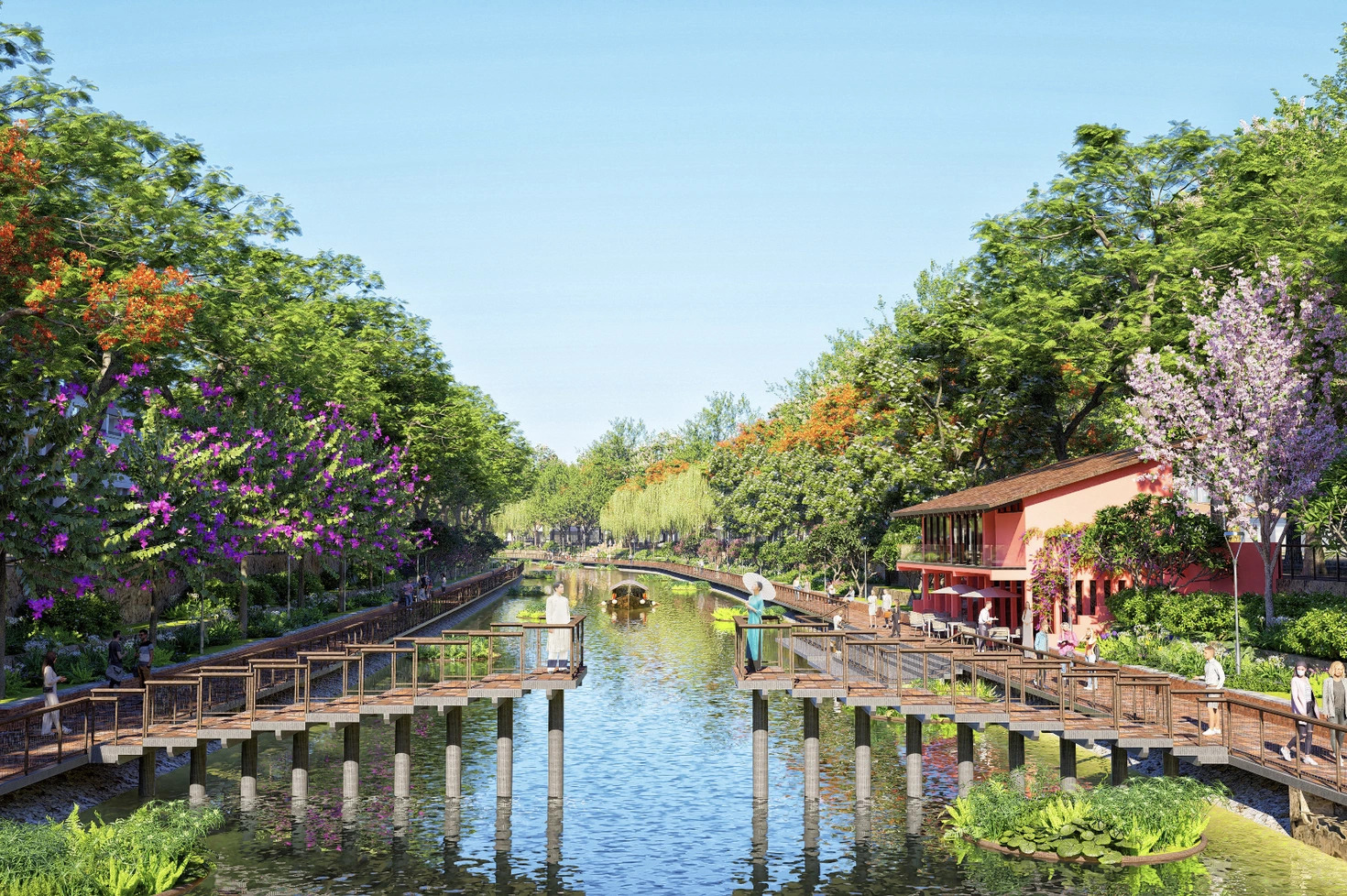
The riverside park project is seen as an opportunity to reshape the waterfront and improve living conditions for surrounding communities.
The project covers a land use area of nearly 738,000 square meters. The construction site stretches along 12 urban wards namely Ngoc Ha, Nghia Do, Lang, Giang Vo, Cau Giay, Yen Hoa, Thanh Xuan, Dong Da, Khuong Dinh, Dinh Cong, Thanh Liet and Hoang Liet.
According to the proposal, the project will feature comprehensive infrastructure upgrades including roads, sidewalks, plazas, retaining walls, riverside walkways, stepped seating areas, ramps, curbstones, tree beds, parking areas, sports fields, and playgrounds. A designated pedestrian route will stretch the entire length of the river.
In addition to the basic infrastructure, the project includes architectural highlights such as service facilities, visual landmarks, auxiliary structures, extensive landscaping, and other recreational amenities.
The preliminary total investment is estimated at over VND 4,665 billion (approximately USD 190 million). The project is proposed under a build-transfer (BT) model, with compensation to investors in the form of land. The city has earmarked about 94 hectares in Phuc Thinh commune for this purpose, including 47.6 hectares of commercial land (36.9 hectares for residential use and 10.7 hectares for commercial services).
It is expected to cost over VND 4,665 billion and last from Q3 2025 to Q3 2027.
If approved, the project is scheduled to break ground on the 71st anniversary of Hanoi's Liberation Day (October 10, 1954 – October 10, 2025).
To Lich River from above
Reviving To Lich River
To Lich River holds a special place in Ha Noi’s urban landscape, flowing through central districts and connecting residential areas with key transport routes.
Over the years, however, it has been heavily burdened by urbanization and wastewater, placing serious pressure on the city’s environment.
Since early September, the capital has begun pumping water from West Lake into the To River through a dedicated pipeline system, aiming to revive the once-polluted waterway and improve the city's urban landscape.
The plan has been implemented in two phases. Since September 9, water from West Lake has been channeled into the To Lich River.
From September 20 onwards, in addition to water from West Lake, treated water from the Yen Xa plant has also been channeled into the river. Accordingly, together, the clean water from West Lake and the treated water from Yen Xa will create a new continuous flow along the To Lich River, maintaining a discharge volume of approximately 200,000 cubic meters per day. Once operational, the river's water level is expected to stabilize at 3.5 meters.
West Lake water officially flows to To Lich River to aid revival
Nguyen Van Tho, 51, a lifelong resident of Nghia Do Ward's Group 23, was present early in the morning to witness the water release. His family has lived by the To Lich River for generations. "For nearly 20 years, the river became severely polluted, especially in October and November when the water level dropped, and the smell became unbearable. No one wanted to come near it anymore," he said. Nguyen hopes that with consistent wastewater treatment and the replenishment from West Lake, the To Lich River will return to its former clean state. "We hope to relax by the river again, cast fishing lines, and enjoy the breeze."
Once completed, To Lich River Park will become a green belt that cools Hanoi, restores ecosystems, and creates a natural airflow corridor for the city.
Comprehensive plan to rehabilitate four major urban rivers
On July 22, the Ha Noi People's Committee issued a decision passing a comprehensive plan to rehabilitate four major urban rivers, including the To Lich, Kim Nguu, Lu, and Set, aiming to restore environmental quality and develop a waterway system by 2030.
The approved proposal sets out 32 programs and projects for implementation during the 2025–2030 period. These initiatives focus on several key areas: pollution control and prevention; development of a balanced and ecological inner-city river system; architectural and landscape design, planning, and renovation; and capacity building and public awareness raising.
Notable projects include the Yen Xa Wastewater Treatment Project; the Construction of the Wastewater Collection System (S1 basin) leading to Yen So Wastewater Treatment Plant; research and proposals for water replenishment solutions for the Kim Nguu, Lu, and Set rivers; and a comprehensive investment project for water replenishment and environmental upgrading of the To Lich River.
The Department of Agriculture and Environment is tasked with leading the implementation of the proposal in collaboration with relevant departments and agencies. It is responsible for coordinating, monitoring, compiling, and reporting annual implementation results.
Based on the list of priority programs and projects approved by the Ha Noi People's Committee, relevant units are required to prepare annual implementation plans and budget estimates for submission to competent authorities for approval in accordance with regulations. Funding will be provided from the municipal and ward/commune budgets, as well as other legally mobilized sources./.
Proposed perspective at the downstream area of the To Lich River
